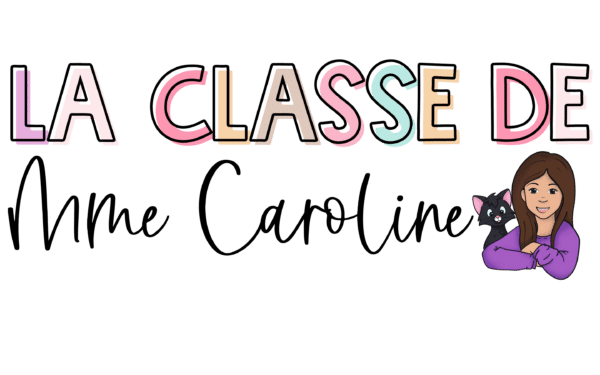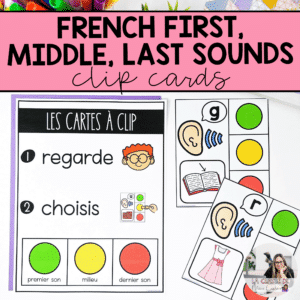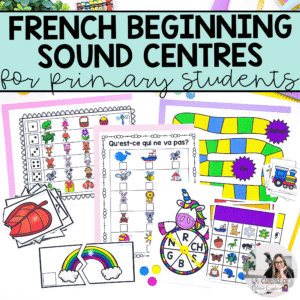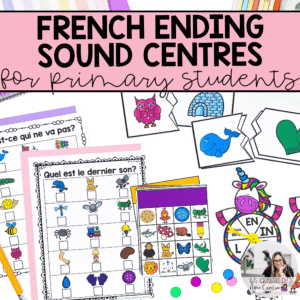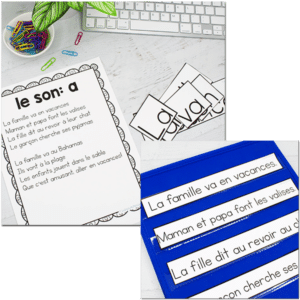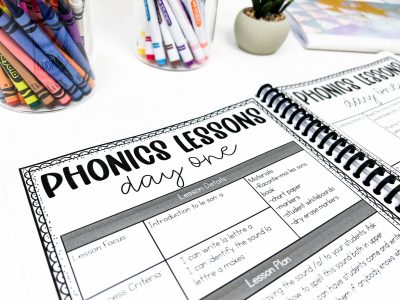With speaking a second language boosting brain power, helping you concentrate better, and teaching children how to express an idea in more than one way, supporting children in their pursuit of a second language is a no-brainer.
But if you’re anything like me (and countless other French teachers), you’re constantly wondering which are the most effective ways of teaching a language and what you should focus your attention on.
French phonological awareness is a necessary skill in teaching reading, and teaching beginning and ending sounds in French is a very important base skill they need to master to become proficient readers.
What is Phonological Awareness?
Phonological awareness can apply to any language and essentially involves the understanding that words have constituent sounds that come together to make up the word.
Children should eventually be able to recognize which words have the same constituent sounds at the beginning or end (for example, boy, book, and bike all begin with b) and isolate the first or last sound of a word.
Since written words correspond to spoken words, phonological awareness is a building block to becoming a proficient reader.
Once kids get the hang of identifying these different sounds within words, they’ll improve their ability to look at a word on a page and understand how it should sound.
Likewise, they’ll be better equipped to hear a word and guess how it might be written on a page. In languages like French, which follows a traditional Latin alphabet, understanding individual sounds allows speakers to piece different sounds together to create a word. Et voilà!
The stronger a child’s French phonological awareness, the better a reader they’re likely to be. So, if you want the next William Shakespeare in your class (or maybe Victor Hugo, sticking with the French theme), focusing on phonological awareness is a must.
Phonological Awareness in French
Learning phonemes is a crucial part of phonological awareness – these are the units of sound that make up a language and distinguish one word from another, such as the p, which separates tap from tag.
French has 37 different phonemes.
A grapheme refers to the individual letters or groups of letters that make up a phoneme – for example, the a and u that make up the French sound au.
French beginning sounds, and French ending sounds are the phonemes or graphemes that make up the start and end of words. In the word ‘chat,’ for example, the beginning sound is ch (pronounced as ‘sh’ in English), and the last sound is a.
Helping your young scholars get their heads around first, and last sounds will boost their proficiency in reading and writing alike. And the good news is, we’ve got just the ways to help you do it without too much prep time needed on your part. Let’s dive in!
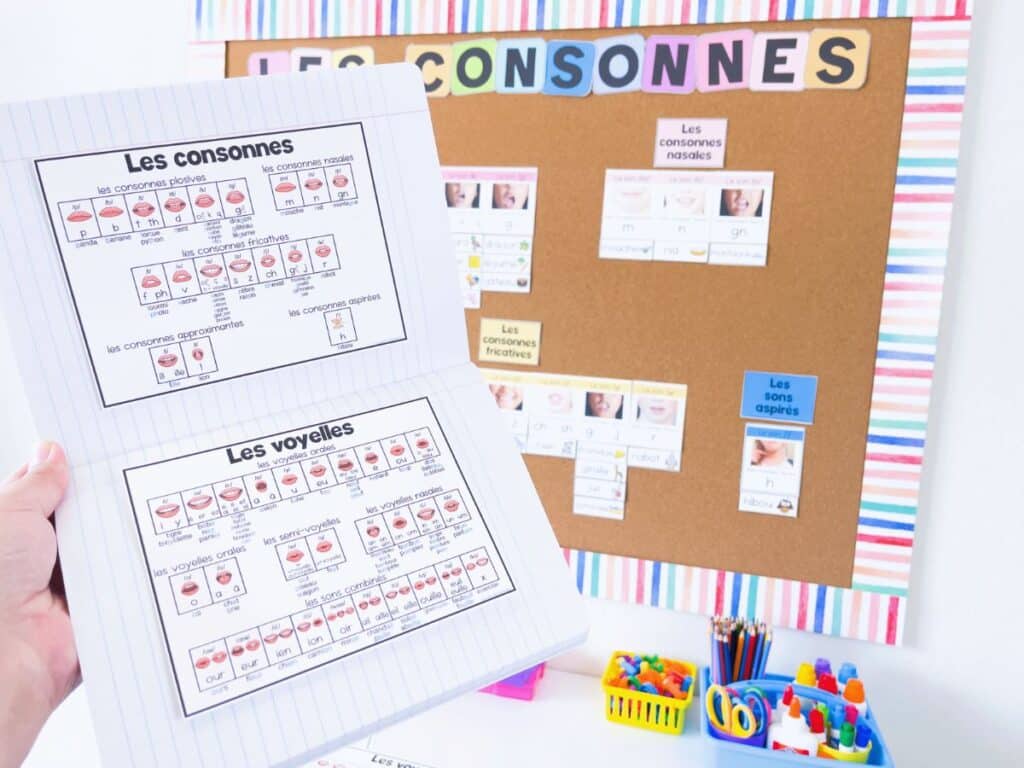
1. Oral and Written Activities for Beginning and Ending Sounds in French
As with most language-learning activities, start with the simplest activities and upgrade to the harder ones as your students start to learn.
A simple activity to introduce the concept of phonemes to your students would be to ask what is the beginning or ending sound in a target word, e.g., the first sound in the word sac is /s/.
Once your students have proven themselves able to identify the first and last sound of a given French word, ask them to determine where a specific sound is found in a given word. They should be able to tell you, for example, that the /l/ sound in mal comes at the end.
Once they’ve mastered this skill, work on production activities.
Give students a sound and ask them to provide a word that starts or begins in the French beginning sound or French ending sound. It could be something as simple as ‘give me a word that starts with b.’
These activities can be done orally or written on whiteboards or in notebooks. You can ask students to write the word down and then underline or circle the target sound.
Remember to stick to the French letters and sounds you’ve taught them explicitly to avoid confusion.

2. Small Group Targeted Practice – Beginning Sounds
Before getting your students to identify both beginning and ending sounds at once, focus on each separately, starting with the beginning sounds. These activities are best practiced in small groups for children who need extra support. Build the group by ability, not reading level.
These French first sound activities are great for use in small-group learning with helpful teacher instructions on how to run the activity as well as an assessment to be completed at the end so you can see how far they’ve come.
Want to help your students master French first sounds? Grab this free alphabet reader now!
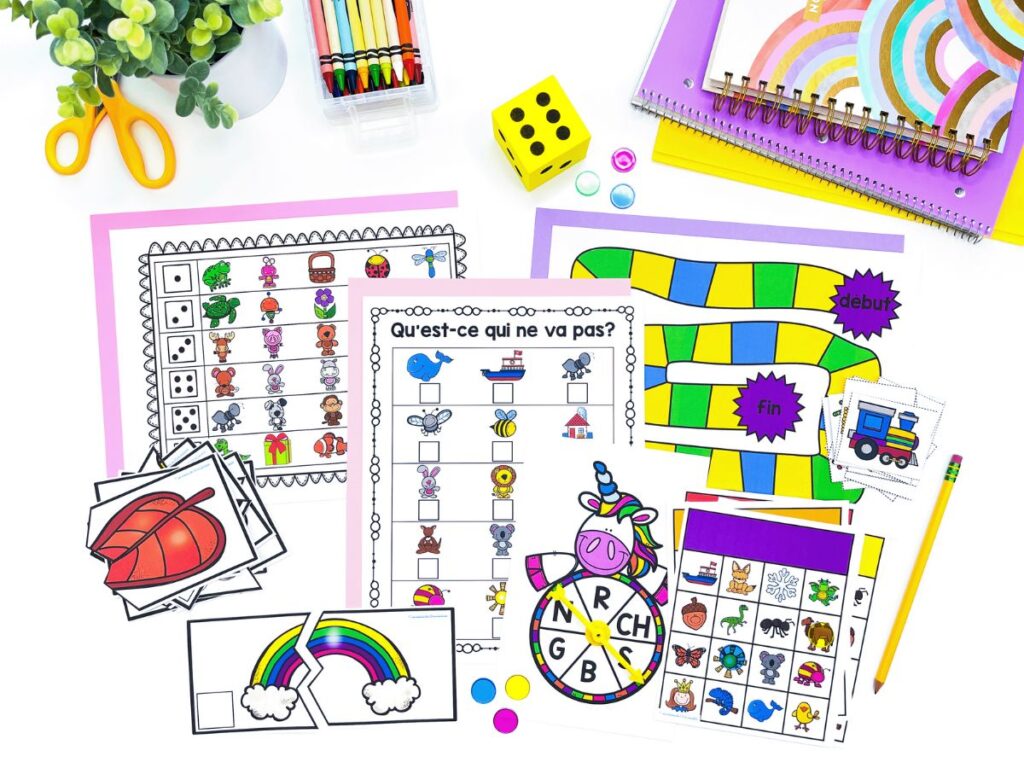
3. Small Group Targeted Practice – Ending Sounds
Once the students are certified first-sound experts, they move on to ending sounds, again working in small groups and putting kids of the same ability together. Just like the first sounds resource, I have activities for learning French last sounds in a small group. This kit is handy for beginners and struggling readers and can be used during extra support periods. It’s full of games and fun activities so your students are sure to be super engaged while they learn!
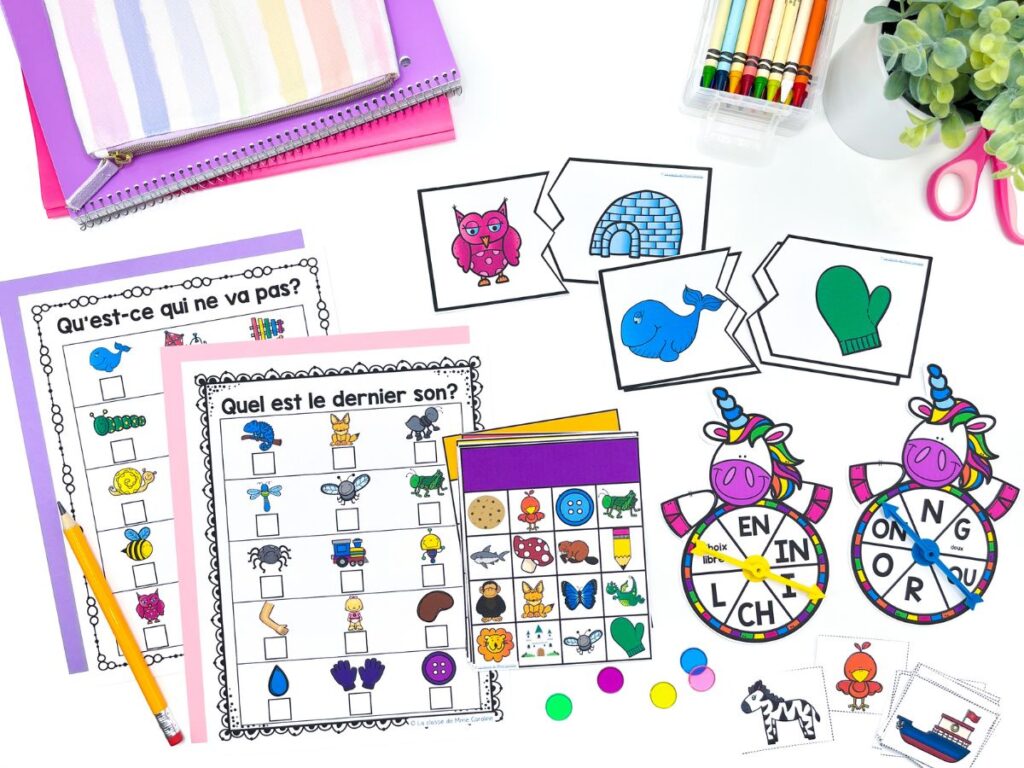
4. Independent Practice
Once your students have mastered identifying phonemes in the different parts of a word, the final step is to move onto independent practice and let them become comfortable with phonology themselves.
At this stage, they should focus on learning to identify beginning and ending sounds in French simultaneously, so independent practice should come after group work.
The goal of independent practice is to allow your students to master these skills to the point where they can use them independently without support from you. That way, they can successfully move on to building phoneme manipulation skills.
Clip cards, such as these first, middle, and last sound clip cards and first sound clip cards, make it easier than ever for students to practice their skills by themselves and for you to check their understanding.
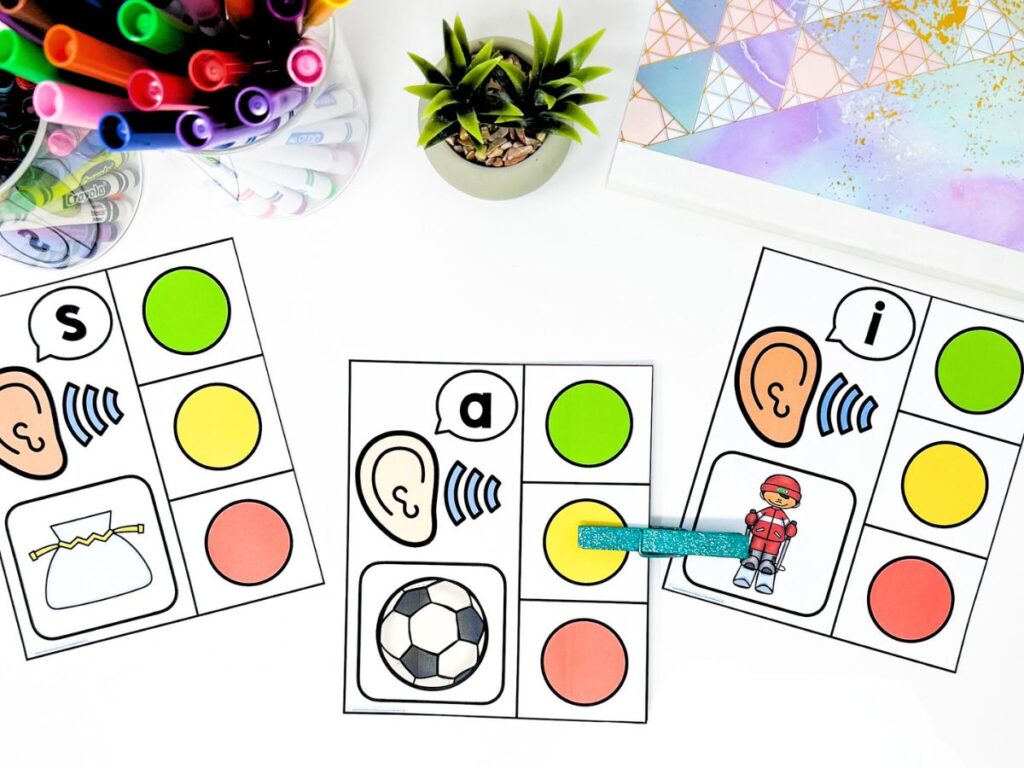
Phonological awareness is a key component of French language learning, but it doesn’t have to be super challenging for you as a teacher.
With the right resources and a combination of whole-class, small-group, and independent practice, your students can master these key components of the French language in no time.
Want to check out the resources listed?
All the links above lead to TPT, but the resources are also available on our website. Here are the resources available here for purchase in CAD. Don’t forget you can also buy credits for an additional discount (up to $15 off).

